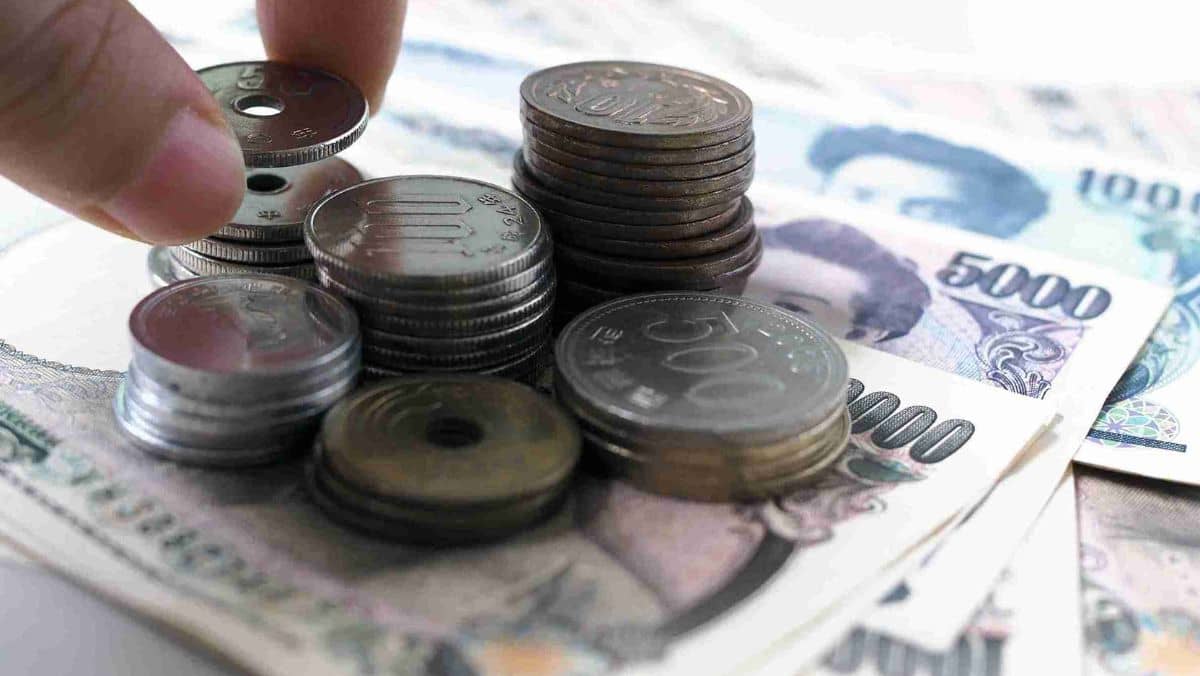Friday Dec 29 2023 08:38

10 min

The British pound and the Japanese yen are two major global currencies that corporations, governments, and travelers frequently exchange. Understanding the factors that impact the pound to yen exchange rate can help you make informed decisions as an investor or business person.
This article will provide background on both currencies, explain what affects the pound to yen rate, analyze the current exchange rate, and discuss the economic impacts on the UK and Japan.
The complex interplay of several essential variables drives the pound to yen exchange rate. This includes the interest rate and monetary policies enacted by the Bank of England and Bank of Japan, the British and Japanese governments’ overall economic growth and fiscal policies, and major global financial developments.
The Bank of England (BOE) and the Bank of Japan (BOJ) are the UK and Japan central banks responsible for enacting monetary policy, respectively. They control interest rates and the money supply to regulate inflation, encourage economic growth, and stabilize currency exchange rates.
The BOE and BOJ have pursued divergent loose and tight monetary policies over the past decade. Following the 2008 Global Financial Crisis, the BOE reduced benchmark interest rates to 0.25% and engaged in quantitative easing - drastically expanding the money supply to spur growth. In contrast, the BOJ has kept ultra-low interest rates under 0% while engaging in unprecedented quantitative easing to fight deflationary pressure.
This monetary policy divergence has influenced the pound to yen exchange rate. Lower UK interest rates reduce demand for the pound, while the BOJ’s loose policy weakens the yen exchange rate. As the BOJ maintains an ultra-loose monetary policy in the future, the pound could strengthen relative to the weakened yen.

The relative economic growth rates and fiscal policies in the UK and Japan also impact the pound to yen rate. Over most of the 2010s, the UK annually averaged around 2% Gross Domestic Product (GDP) growth compared to just 1% average growth in Japan.
The UK economy outperformed Japan’s partly due to growth-friendly fiscal policies under past Conservative governments targeting deficits, corporate tax cuts, and investments. However, Brexit uncertainty slowed UK growth, which has averaged just 1% in the past few years.
Japan’s economy has struggled against aging demographics, massive debt levels, and two “lost decades” of growth. More robust expansionary fiscal policy and higher infrastructure spending under Prime Minister Kishida could boost Japanese growth.
Financial events like the ongoing US-China trade war, Brexit, stock market crashes, or regional debt crises can trigger sharp up or down swings in the pound/yen exchange rate.
For example, in June 2016, when the UK referendum approved Brexit, the pound crashed 10% relative to the yen in two days due to uncertainty. Likewise, as global markets crashed, the pound fell over 6% against the yen during March 2020 at the start of the Covid pandemic.
Such financial developments that impact investor confidence, global growth, and currency stability can overwhelm economic factors and cause the pound to yen exchange rate volatility.
The latest pound-to-yen data from October 1st through December 17th, 2023, shows the exchange rate trending up early in the period before pulling back in December.
On October 1st, the exchange rate opened the period at 183.02 yen to the pound as the yen maintained broad weakness and strengthened modestly due to solid UK economic data. Over the next two weeks, the pound to yen rate continued climbing to reach a local peak of 185.10 on October 29th.
Increased monetary policy divergence drove upside pressure on the exchange rate during October. The Bank of England raised interest rates 50 basis points on September 22nd and signaled further hikes were imminent to combat stubborn UK inflation near 10%. Meanwhile, the Bank of Japan vowed to stick with yield curve control and negative interest rates to support Japan’s fragile, uneven recovery.
This growing interest rate gap boosted the higher-yielding pound’s appeal versus the yen, sending GBP/JPY above 185. However, the exchange rate surged in early November - soaring over 3% in just two weeks to reach the period’s peak of 188.69 on November 19th.

The early November spike was fueled by markets’ pricing at a more aggressive pace of BoE tightening with overnight swaps, indicating UK rates peaking around 4.5% in 2023 versus previous expectations of under 4%. Sharp upside adjustments to UK rate hike bets drove substantial pound gains against the yen and other major rivals.
But GBP/JPY soon lost momentum, falling below 187 as disappointing UK economic data like weak preliminary Q3 GDP figures weighed on rate hike bets. This confluence of pound weakness and yen short covering pulled the pound to yen back nearer 186 by early December. Increased fears of a UK recession will likely cap the substantial upside for the pair in the near term. However, sustained yen weakness driven by BOJ policies means dips in GBP/JPY may attract renewed buying interest around the mid-180s zone.
You might also like to read: How to apply forex scalping strategy
The recent upside pressure and volatility in the pound to yen exchange rate carries potential benefits and drawbacks for British and Japanese exporters, consumers, and foreign investors.
For major export-oriented UK industries like aerospace, pharmaceuticals, luxury vehicles, and Scotch whisky, periodic pound weakness versus the yen driven by economic uncertainty or financial market swings carries risks. Weaker sterling makes British goods more expensive for Japanese importers - reducing demand and overseas profits.
However, extended yen weakness and a stronger pound provide competitive advantages to UK exporters in the Japanese marketplace. This boosts profitability and enables UK firms to cut prices to gain greater market share.
Meanwhile, for Japanese automakers, electronics brands, and machinery manufacturers - yen depreciation against the pound driven by BOJ monetary stimulus provides a considerable upside. As the yen has weakened consistently versus the sterling over the past decade, Japanese goods have become cheaper for British importers - spurring demand.
Lastly, significant GBP/JPY swings caused by economic uncertainty like Brexit can negatively impact foreign direct investment (FDI) flows between Japan and the UK as investor confidence wanes. Both economies may suffer from reduced capital expenditure in plant, equipment, and commercial property that supports growth and employment.
Therefore, while Japanese exporters benefit long-term from consistent yen weakness driven by loose Bank of Japan monetary policies, extreme GBP/JPY volatility can harm both economies.
Expand your knowledge with this write-up: Forex trading scams- What you need to know to stay safe
The complex factors driving the volatility between the British pound and Japanese yen underscore the risks facing forex traders. While sustained yen weakness may benefit some Japanese exporters in the long run, drastic swings caused by shifting monetary policies, growth trajectories, and global events can complicate matters for corporations and governments.
Traders should continue developing their knowledge of how economic fundamentals and financial developments impact major currency pairs before putting capital at risk. Furthermore, it is essential to adopt disciplined trading strategies based on sound analysis.
No trader should enter the market without carefully studying technical and fundamental forex trading techniques and implementing risk management best practices. Ongoing education, measured risk-taking, and sticking to a strategy are essential for success when trading a volatile pair like GBP/JPY.
Learn and trade with Markets.com: The ultimate trading community!
“When considering “CFDs” for trading and price predictions, remember that trading CFDs involves a significant risk and could result in capital loss. Past performance is not indicative of any future results. This information is provided for informative purposes only and should not be considered investment advice.”